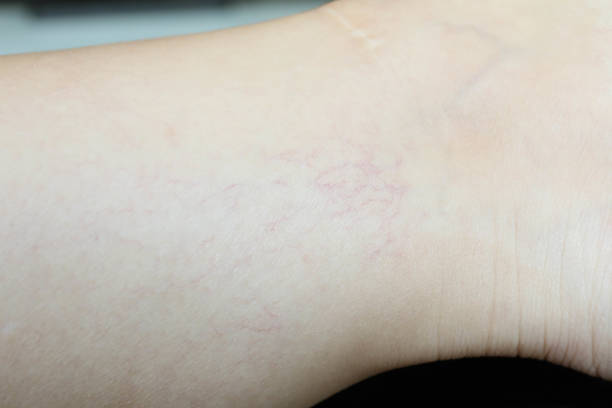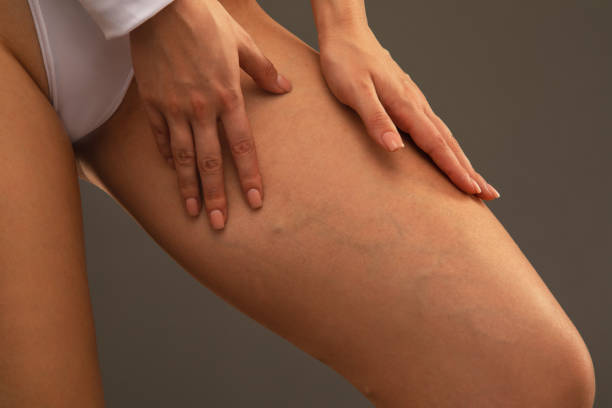Introduction
Spider Veins Treatment in Abu Dhabi also known as telangiectasias, are small, dilated blood vessels that appear close to the surface of the skin. These veins can create a web-like pattern and are most commonly found on the legs and face. While they are generally harmless, many people seek treatment for cosmetic reasons. Understanding how long it takes for spider veins treatment to show results is essential for setting realistic expectations.
Understanding Spider Veins
What Are Spider Veins?
Spider veins are tiny blood vessels that become visible due to various factors, including genetics, hormonal changes, and prolonged standing or sitting. They can vary in color, often appearing red, blue, or purple, and typically do not cause any pain or discomfort.
Common Causes and Risk Factors
Several factors contribute to the development of spider veins, including:
- Genetics: Family history can play a significant role.
- Hormonal changes: Pregnancy, menopause, and hormone therapy can increase the likelihood of developing spider veins.
- Age: As we age, our veins can lose elasticity, making spider veins more prevalent.
- Lifestyle factors: Obesity, lack of exercise, and prolonged periods of standing or sitting can contribute to their formation.

Treatment Options for Spider Veins
Overview of Treatment Methods
Fortunately, various treatments can effectively reduce or eliminate spider veins. The most common options include:
Sclerotherapy
Sclerotherapy involves injecting a solution directly into the spider veins, causing them to collapse and fade away. This treatment is minimally invasive and typically requires no anesthesia.
Laser Therapy
Laser therapy uses concentrated beams of light to target and damage the blood vessels, leading to their eventual disappearance. This method is suitable for those with smaller spider veins.
Intense Pulsed Light (IPL) Therapy
IPL therapy uses broad-spectrum light to treat various skin conditions, including spider veins. It targets pigmented and vascular lesions and can improve the overall appearance of the skin.
Timeline for Results
Immediate Effects vs. Long-Term Results
Understanding the timeline for results can help patients manage their expectations post-treatment.
What to Expect Right After Treatment
Immediately after treatment, patients may notice some swelling, redness, or bruising in the treated areas. These side effects are normal and typically resolve within a few days. However, visible results may not be immediately apparent.
Timeline for Visible Results
- Sclerotherapy: Most patients begin to see results within 3 to 6 weeks after treatment, as the veins gradually fade. However, full results may take up to 3 to 4 months.
- Laser Therapy: Results may vary, but patients can expect to see improvement within 2 to 3 weeks post-treatment, with optimal results appearing after several months.
- IPL Therapy: Improvement can typically be observed within a few weeks, with maximum results developing over 1 to 3 months.
Factors Influencing Treatment Outcomes
Several factors can affect how quickly and effectively spider veins treatment results appear.
Individual Factors
Severity and Size of Spider Veins
The size and severity of the spider veins being treated can influence the timeline for results. Larger or more extensive spider veins may take longer to respond to treatment than smaller ones.
Skin Type and Color
Individuals with lighter skin may see results faster than those with darker skin tones. The contrast between the treated veins and the surrounding skin can impact the perceived effectiveness of the treatment.
Treatment-Specific Factors
Technique Used
The method of treatment also plays a crucial role in determining the speed of results. Sclerotherapy may yield results more quickly for certain types of veins than laser or IPL therapy.
Number of Sessions Required
Some patients may require multiple sessions to achieve their desired results, which can extend the overall timeline for seeing improvements. Your treatment plan will depend on the severity and number of veins needing treatment.
Aftercare and Maintenance
Post-Treatment Care
Proper aftercare is vital to ensure optimal results and minimize complications.
Recommended Aftercare Practices
- Avoid strenuous activities and prolonged sitting or standing for at least 24 hours after treatment.
- Wear compression stockings as advised by your healthcare provider to support healing.
- Keep the treated area clean and moisturized, and avoid hot baths or saunas for a few days.
Signs of Complications
While complications are rare, it’s essential to be aware of signs that may require medical attention. These include:
- Increased pain or swelling in the treated area
- Development of new or worsening symptoms
- Any signs of infection, such as fever or discharge
Conclusion
Making Informed Decisions
Understanding how long it takes for spider veins treatment to show results is crucial for anyone considering these procedures. Individual experiences may vary, so it’s essential to consult with a qualified healthcare professional to discuss treatment options and timelines tailored to your needs. By being informed and prepared, you can achieve the best possible outcomes and enjoy your journey towards smoother, clearer skin.
FAQs
1. How many sessions are usually needed for spider veins treatment?
The number of sessions needed depends on the size and severity of the spider veins. Typically, patients require between 1 to 3 sessions to achieve optimal results. Larger or more extensive spider veins may need additional treatments.
2. Is spider veins treatment painful?
Most spider veins treatments, such as sclerotherapy and laser therapy, cause minimal discomfort. You may feel a slight stinging or burning sensation during the procedure, but it’s usually well-tolerated. Numbing creams can also be used to minimize any discomfort.
3. Can spider veins reappear after treatment?
While treatment effectively removes existing spider veins, new ones may form over time due to factors like genetics, aging, or lifestyle. Follow-up treatments may be necessary to maintain results, especially for those prone to spider veins.
4. Are there any side effects after spider veins treatment?
Common side effects include mild redness, swelling, bruising, and itching at the treatment site. These symptoms usually subside within a few days. Rare complications, such as blood clots or infection, may require medical attention.
5. Can I return to normal activities after treatment?
Yes, most patients can resume normal activities immediately after treatment. However, it’s recommended to avoid strenuous exercise, hot baths, and sun exposure for a few days to support proper healing and prevent complications.
